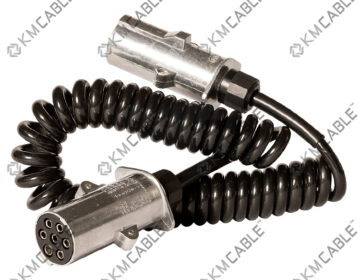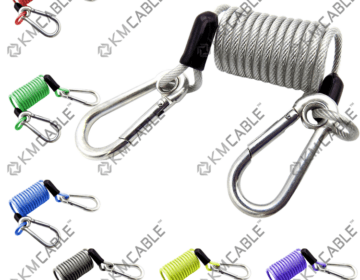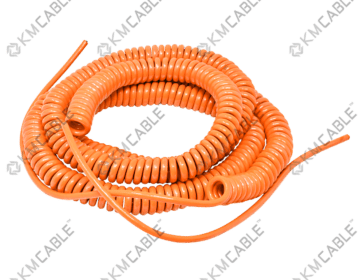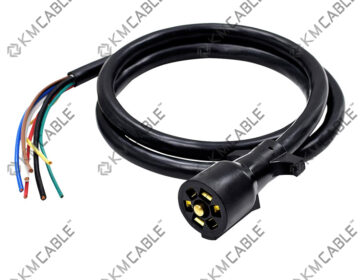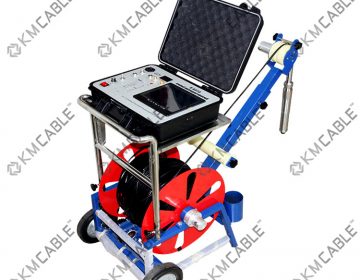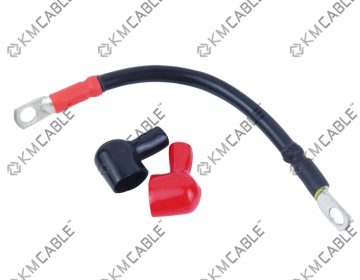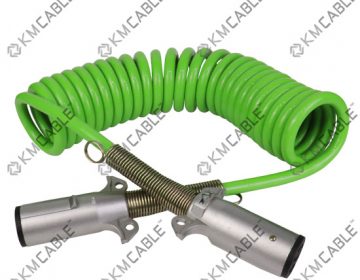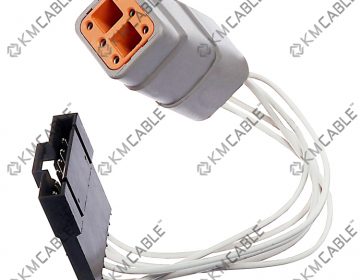
Drag chain cables, also known as energy chain or cable carrier cables, are critical components in modern automated systems, ensuring the reliable transmission of power, signals, and data in dynamic applications. As we approach 2025, the landscape for drag chain cables is rapidly evolving, driven by technological advancements and the ever-increasing demand for automation across various industries. This article explores the current state and future trajectory of drag chain cables, examining their purpose, the latest developments, material trends, performance improvements, expanding applications, and the market outlook.
Overview of Drag Chain Cables: Purpose and Function
Drag chain cables are specifically engineered to operate within cable carrier systems, which guide and protect cables during repeated movement. They are designed to withstand continuous flexing, bending, and torsion, making them indispensable in environments where machinery and equipment require constant motion. The primary function of these cables is to facilitate the safe and efficient transfer of electrical power, control signals, and data between stationary and moving machine parts.
In industrial automation, drag chain cables are commonly found in robotic arms, CNC machinery, conveyor systems, and automated storage and retrieval systems. Their robust construction prevents kinking, tangling, or premature wear, ensuring reliable operation even under demanding conditions. The ability of these cables to endure millions of cycles without failure is crucial for minimizing downtime and maintenance costs.
Another key aspect of drag chain cables is their compatibility with a variety of cable carriers, which come in different materials and sizes. This compatibility ensures that systems can be tailored to specific application requirements, optimizing both performance and longevity. The flexibility and resilience of drag chain cables make them suitable for high-speed and high-acceleration movements, essential in modern manufacturing and logistics.
In summary, drag chain cables serve as the lifelines of dynamic machinery, providing safe, reliable, and continuous connectivity in environments where traditional cables would quickly fail. Their specialized design and function are integral to the success of automated processes across a multitude of industries.
Key Technological Advancements Expected by 2025
By 2025, several technological advancements are anticipated to redefine the capabilities of drag chain cables. One significant development is the integration of smart sensor technology within the cables themselves. These embedded sensors can monitor parameters such as temperature, bending radius, and mechanical stress, providing real-time data for predictive maintenance and reducing the risk of unexpected failures.
Another notable advancement is the enhancement of cable shielding techniques to address the growing need for electromagnetic compatibility (EMC) in complex industrial environments. Improved shielding materials and designs will help minimize signal interference, ensuring the reliable transmission of data even in high-frequency and high-power applications. This is particularly important as the Industrial Internet of Things (IIoT) proliferates, demanding higher data integrity.
Furthermore, advancements in miniaturization and lightweight construction are expected to make drag chain cables more adaptable to compact and space-constrained systems. Manufacturers are developing thinner yet more durable cable profiles without compromising performance, enabling greater flexibility in machine design and integration.
Lastly, the adoption of modular and customizable cable solutions will gain traction by 2025. Manufacturers will offer cables that can be tailored to specific application needs, with interchangeable components and configurable lengths. This modularity not only simplifies installation and maintenance but also allows for rapid adaptation to evolving industry requirements.
Materials and Construction Trends in Modern Cables
The choice of materials and construction methods for drag chain cables is undergoing significant transformation. High-performance polymers are increasingly replacing traditional PVC and rubber insulations, offering superior resistance to abrasion, chemicals, and extreme temperatures. These advanced materials also contribute to reduced cable weight, which is critical for high-speed applications.
In terms of conductor materials, the use of finely stranded copper and, in some cases, tinned copper is becoming more prevalent. These conductors provide enhanced flexibility and fatigue resistance, essential for enduring millions of bending cycles. Some manufacturers are exploring the use of alternative conductive materials, such as aluminum alloys, to further reduce weight and cost without sacrificing conductivity.
Multi-layered cable constructions are gaining popularity, featuring reinforced cores, specialized fillers, and high-strength outer jackets. This layered approach improves mechanical strength while maintaining flexibility, ensuring that cables can withstand the rigorous demands of drag chain systems. Advanced extrusion and braiding techniques are also being employed to enhance durability and uniformity.
Additionally, environmental sustainability is influencing material choices, with a growing emphasis on recyclable and halogen-free compounds. These eco-friendly options not only comply with stringent regulatory standards but also appeal to manufacturers seeking to reduce their environmental footprint. The trend towards greener materials is likely to accelerate as sustainability becomes a core consideration in cable manufacturing.
Performance Improvements and Durability Enhancements
The performance of drag chain cables is being elevated through a combination of material innovation and design optimization. Enhanced insulation and jacket materials are providing greater resistance to oils, coolants, and harsh industrial chemicals, which are common in automated manufacturing environments. This increased chemical resistance translates into longer service life and reduced maintenance requirements.
Mechanical durability is another area of significant improvement. New cable constructions are engineered to resist abrasion, crushing, and tensile stress, allowing them to operate reliably in high-cycle, high-velocity applications. Reinforced strain relief mechanisms and specialized fillers further protect the cable core from damage caused by repeated flexing and torsion.
Thermal management is also a focal point, with cables designed to operate efficiently across a wider temperature range. Improved heat dissipation and thermal stability enable drag chain cables to function in environments where traditional cables would degrade or fail. This is particularly important in sectors such as automotive manufacturing and food processing, where temperature extremes are common.
Lastly, performance enhancements are being driven by rigorous testing and quality control standards. Manufacturers are investing in advanced testing facilities to simulate real-world operating conditions, ensuring that cables meet or exceed industry benchmarks for longevity and reliability. These efforts contribute to the overall dependability of drag chain cables, supporting the continuous operation of automated systems.
Industry Applications Expanding with Automation Growth
The rapid expansion of automation is driving the adoption of drag chain cables across a diverse array of industries. In manufacturing, these cables are integral to the operation of robotic arms, automated assembly lines, and material handling systems, where high-speed and precise movement are essential. Their reliability and flexibility contribute to increased productivity and reduced downtime.
In the logistics and warehousing sector, drag chain cables support automated guided vehicles (AGVs), conveyor systems, and sorting machines. As e-commerce and supply chain automation continue to grow, the demand for robust and long-lasting cable solutions is escalating. Drag chain cables ensure consistent power and data transmission, enabling seamless operation of these critical systems.
The medical and pharmaceutical industries are also adopting drag chain cables in equipment such as automated laboratory analyzers, packaging machines, and surgical robots. Here, the need for cleanroom-compatible, low-emission, and highly flexible cables is paramount. Manufacturers are responding with specialized cable designs that meet the strict hygiene and performance requirements of these sectors.
Moreover, emerging applications in renewable energy, such as solar panel cleaning robots and wind turbine maintenance systems, are creating new opportunities for drag chain cables. The ability to perform reliably in outdoor and harsh environments expands the scope of their use, further solidifying their role as essential components in the advancing world of automation.
Market Outlook and Future Challenges for Drag Chain Cables
The market for drag chain cables is poised for significant growth by 2025, fueled by the relentless march of automation and digitalization. Market analysts project robust demand across Asia, Europe, and North America, driven by investments in smart manufacturing, logistics, and infrastructure. The increasing complexity of automated systems is expected to sustain the need for advanced and reliable cable solutions.
Despite the positive outlook, several challenges loom on the horizon. The rapid pace of technological change requires manufacturers to continuously innovate and adapt, balancing performance improvements with cost-effectiveness. Supply chain disruptions, particularly in raw materials, could pose risks to production and pricing stability.
Additionally, as systems become more interconnected and data-intensive, ensuring the electromagnetic compatibility and cybersecurity of drag chain cables will become increasingly critical. Cables must not only resist physical wear but also safeguard the integrity of sensitive data transmissions in an era of pervasive connectivity.
Finally, environmental regulations and sustainability goals will shape the future of cable design and manufacturing. The industry must address the dual challenge of minimizing environmental impact while delivering high-performance products. Companies that can innovate in materials, design, and recycling processes will be best positioned to thrive in the evolving marketplace.
In conclusion, drag chain cables are set to play an even more vital role in the automated and connected industries of 2025. Ongoing advancements in technology, materials, and performance are enhancing their reliability, flexibility, and lifespan, while expanding their applications across traditional and emerging sectors. However, the industry must navigate challenges related to innovation, supply chain management, data security, and sustainability. By addressing these issues proactively, manufacturers and users alike can ensure that drag chain cables continue to support the dynamic needs of modern automation for years to come.

